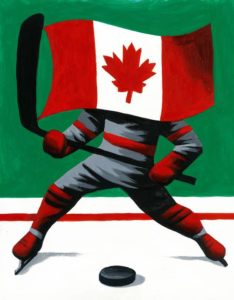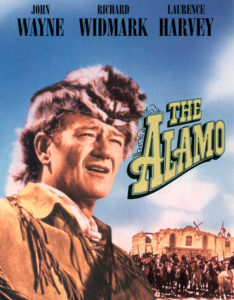Canada gave us the modern form of a sport that has been played for centuries around the world
The Wall Street Journal, February 11, 2019

ILLUSTRATION: THOMAS FUCHS
Canadians like to say—and print on mugs and T-shirts—that “Canada is Hockey.” No fewer than five Canadian cities and towns claim to be the birthplace of ice hockey, including Windsor, Nova Scotia, which has an entire museum dedicated to the sport. Canada’s annual Hockey Day, which falls on February 9 this year, features a TV marathon of hockey games. Such is the country’s love for the game that last year’s broadcast was watched by more than 1 in 4 Canadians.
But as with many of humanity’s great advances, no single country or person can take the credit for inventing ice hockey. Stick-and-ball games are as old as civilization itself. The ancient Egyptians were playing a form of field hockey as early as the 21st century B.C., if a mural on a tomb at Beni Hasan, a Middle Kingdom burial site about 120 miles south of Cairo, is anything to go by. The ancient Greeks also played a version of the game, as did the early Christian Ethiopians, the Mesoamerican Teotihuacanos in the Valley of Mexico, and the Daur tribes of Inner Mongolia. And the Scottish and Irish versions of field hockey, known as shinty and hurling respectively, have strong similarities with the modern game.
Taking a ball and stick onto the ice was therefore a fairly obvious innovation, at least in places with snowy winters. The figures may be tiny, but three villagers playing an ice hockey-type game can be seen in the background of Pieter Bruegel the Elder’s 1565 painting “Hunters in the Snow.” There is no such pictorial evidence to show when the Mi’kmaq Indians of Nova Scotia first started hitting a ball on ice, but linguistic clues suggest that their hockey tradition existed before the arrival of European traders in the 16th century. The two cultures then proceeded to influence each other, with the Mi’kmaqs becoming the foremost maker of hockey sticks in the 19th century.
The earliest known use of the word hockey appears in a book, “Juvenile Sports and Pastimes,” written by Richard Johnson in London in 1776. Recently, Charles Darwin became an unlikely contributor to ice hockey history after researchers found a letter in which he reminisced about playing the game as a boy in the 1820s: “I used to be very fond of playing Hocky [sic] on the ice in skates.” On January 8, 1864, the future King Edward VII played ice hockey at Windsor Castle while awaiting the birth of his first child.
As for Canada, apart from really liking the game, what has been its real contribution to ice hockey? The answer is that it created the game we know today, from the official rulebook to the size and shape of the rink to the establishment of the Stanley Cup championship in 1894. The first indoor ice hockey game was played in Montreal in 1875, thereby solving the perennial problem of pucks getting lost. (The rink was natural ice, with Canada’s cold winter supplying the refrigeration.) The game involved two teams of nine players, each with a set position—three more than teams field today—a wooden puck, and a list of rules for fouls and scoring.
In addition to being the first properly organized game, the Montreal match also initiated ice hockey’s other famous tradition: brawling on the ice. In this case, the fighting erupted between the players, spectators and skaters who wanted the ice rink back for free skating. Go Canada!






